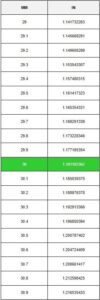Receivables Management: Strengthening Your Cash Flow in Australian Businesses
In the fast-paced and competitive Australian business landscape, receivables management plays a crucial role in maintaining healthy cash flow and financial stability. Whether you are running a small enterprise or managing a growing company, effectively handling accounts receivable ensures that your business is paid on time and continues to thrive.
What Is Receivables Management?
Receivables management refers to the process’s businesses use to track, collect, and manage payments owed by customers. This includes issuing invoices, setting credit terms, monitoring outstanding balances, and following up on late payments.
Efficient receivables management helps reduce bad debt, improves working capital, and supports long-term growth.
Why Is Receivables Management Important for Australian Businesses?
1. Cash Flow Consistency
- Unpaid invoices can restrict access to operating cash.
- Timely collections ensure you have funds to pay suppliers, and employees, and reinvest in your business.
- Avoids the need for unnecessary borrowing or overdrafts.
2. Improved Business Relationships
- Clear credit policies and professional follow-ups create transparency.
- Clients appreciate clear terms and predictable reminders.
- A smoother invoicing processreflects professionalism.
3. Compliance with Australian Financial Standards
- Aligns with ATO expectations regarding record-keeping and GST tracking.
- Reduces audit risks and supports clean bookkeeping.
Key Components of Effective Receivables Management
1. Credit Policy Setup
- Define customer eligibility for credit.
- Set clear credit limits and payment terms.
- Provide written agreements with each client.
2. Invoicing Process
- Issue invoices promptly after delivering goods/services.
- Include all relevant details: ABN, due date, and payment methods.
- Use accounting software like MYOB or Xero for automation.
3. Monitoring & Reporting
- Review accounts receivable aging reports regularly.
- Flag overdue payments and follow up without delay.
- Offer early payment incentives or late payment penalties.
4. Debt Recovery Strategy
- Use reminders—email, phone, or SMS.
- Outsource to collection agencies if needed.
- Understand your legal rights under Australian consumer and business law.
Tools to Improve Receivables Management
1. Cloud Accounting Software:
Automates invoicing and payment reminders.
2. Customer Relationship Management (CRM):
Tracks interactions and payment history.
3. Bank Reconciliation Tools:
Speeds up tracking of paid and unpaid invoices.
4. Payment Gateways:
Offer multiple secure payment methods for convenience.
Tips for Australian Business Owners
- Conduct credit checks before offering terms.
- Require upfront deposits for large orders.
- Keep your terms visible and simple.
- Train your staff to handle collections with diplomacy.
When to Seek Professional Help
If receivables are constantly overdue or impacting your business growth, consider consulting a bookkeeper or financial advisor. Professionals can help:
- Set up efficient credit control systems.
- Reduce the risk of bad debt.
- Ensure your process complies with tax laws and reporting standards.
Conclusion
Receivables management is not just about collecting money—it is about protecting your business’s financial health. For Australian business owners, adopting structured and proactive approaches to receivables can unlock smoother cash flow, strengthen client relationships, and pave the way for long-term success.
Stay ahead by implementing the right tools, strategies, and professional support, ensuring your hard-earned revenue flows into your account—right where it belongs.














Post Comment